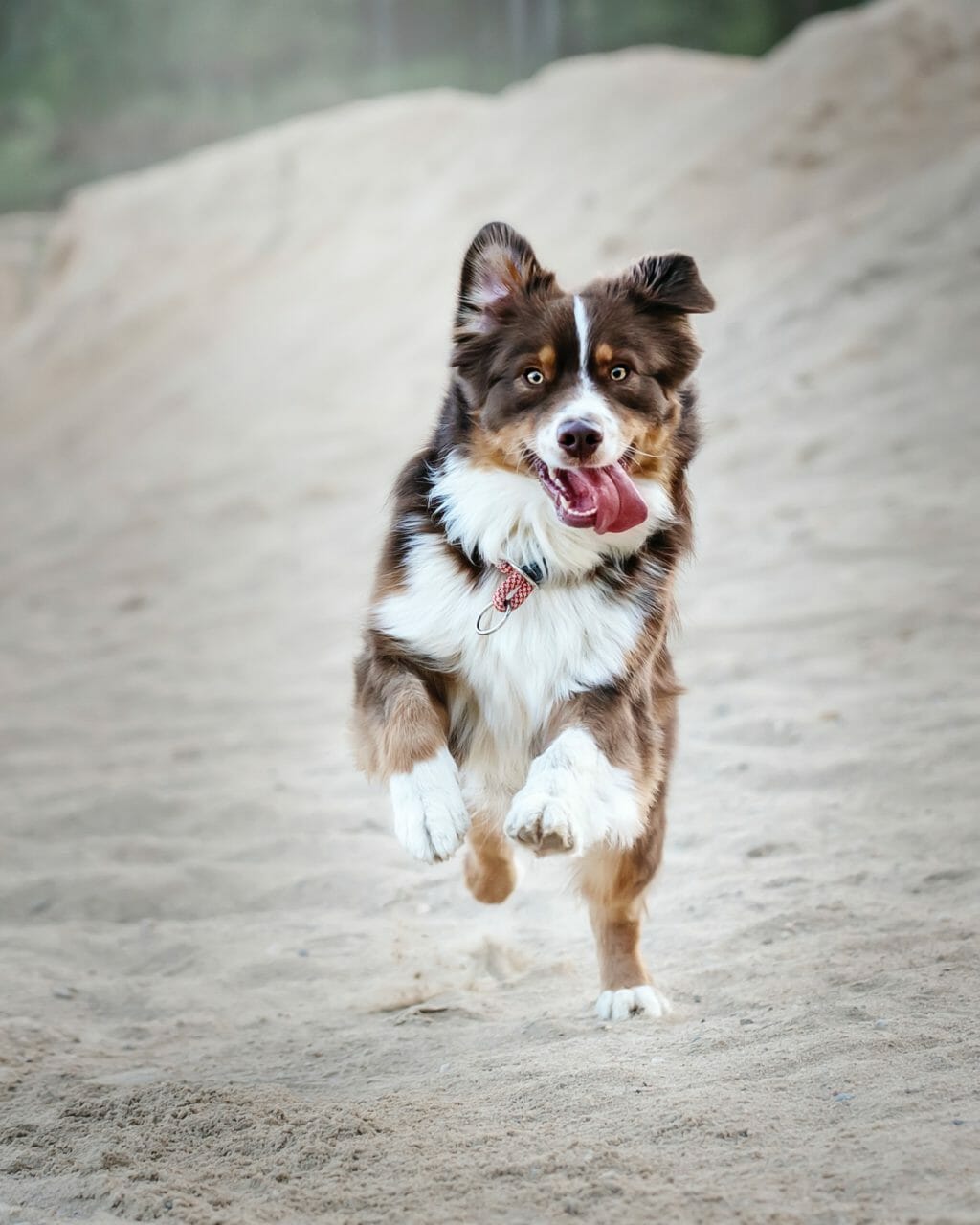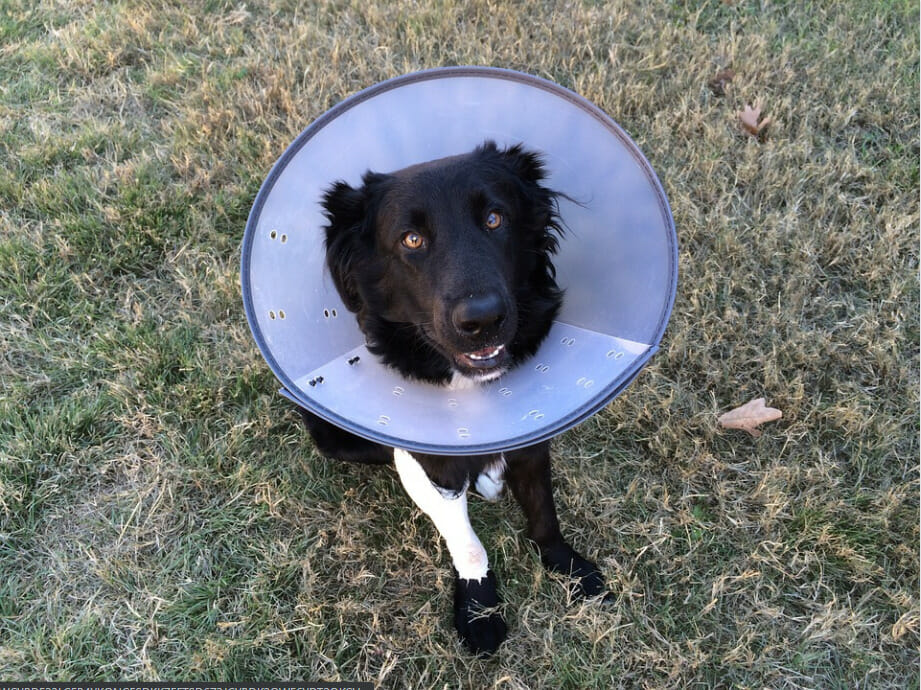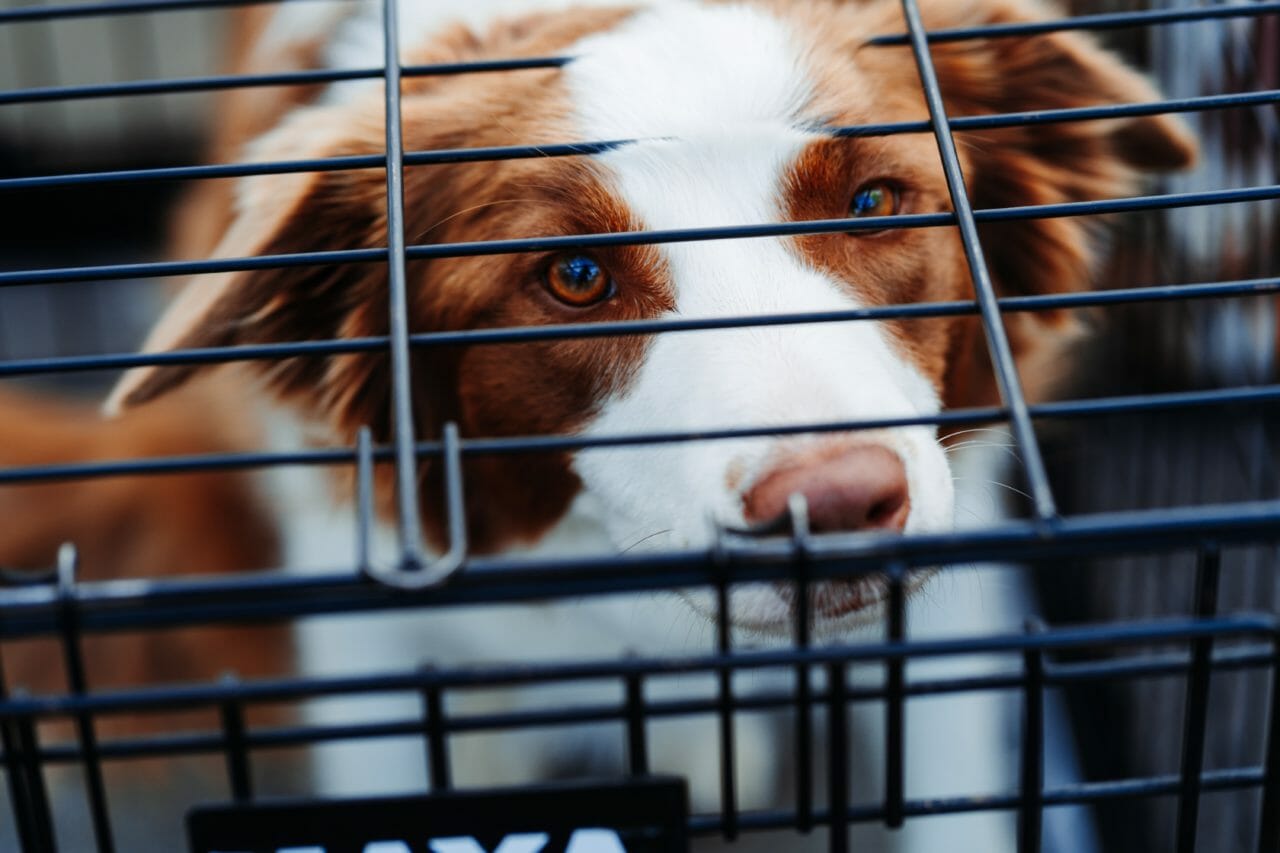Get your four-legged friend back on track by following our full ACL (CCL) guide
If your dog suddenly starts limping, it’s crucial to determine what is causing the limp. One main cause of limping in dogs is a torn ACL (anterior cruciate ligament).
Don’t panic, as a torn ACL is fairly common in dogs, and with proper treatment, many dogs can lead happy and healthy lives after a full ACL recovery. In this blog post, RehabPet.com will answer all of your questions about torn ACLs in dogs and how you can make sure your pups continue to run, jump, and play despite their injury.
So, let’s get started!
What Is an ACL in Dogs?
The ACL is one of the four main ligaments in your dog’s knee, but it’s actually called a caudal cruciate ligament (CCL) in dogs. The CCL helps to stabilize your dog’s knee joint and prevents the femur from sliding backward on the tibia.
In humans, the ACL is located in the front of the knee, but in dogs, it is located in the back.
The CCL is crucial for normal knee function, and when it is torn, it can cause your dog a lot of pain and make it difficult or impossible for them to use the affected leg. Dogs most commonly tear their CCL due to sudden twisting or turning movements, jumping from heights, or blunt force trauma (for example, being hit by a car).
Dogs of all breeds and sizes can tear their CCLs. However, some dogs are more prone to injury than others. For example, dogs that love to run and jump, like golden retrievers and Labrador retrievers, are more likely to tear their CCLs due to their size and weight.
Some breeds, such as Newfoundlands and St. Bernards, are also more prone to CCL tears due to their conformation (the way their bones are shaped).
Can a Dog Walk With a Torn CCL?
The short answer is yes, your dog can walk with a torn CCL.
However, walking on a torn CCL is sometimes painful and will likely cause your dog to limp. It’s important to note that even though your dog can walk with a torn CCL, this does not mean that the injury should go untreated.
There are two different guidelines for CCL tears to determine if your dog should be walking:
Cranial Cruciate Ligaments tear
The most common CCL tear in dogs. This kind of tear happens when the CCL becomes stretched or torn. This is also known as a strain.
Caudal Cruciate Ligaments tear
A less common but more serious problem. This kind of tear happens when the CCL snaps or ruptures.
If your dog has a cranial cruciate ligament tear, it may only need rest and pain medication to heal. However, if your dog has a caudal cruciate ligament tear it will likely need surgery to repair the ligament.
But just because the CCL hasn’t been completely torn doesn’t mean your furry friend should be out running and jumping like normal. If your dog has a sprain or strain, it’s important to keep them calm to prevent further injury.
What Are the Signs of a CCL Tear?
The most common sign of a CCL tear is limping.
You may notice that your dog slows after running or playing. They may also hold their leg up or refuse to put weight on it. An extended period of lameness is also a sign of a CCL tear.
If your dog seems to be less and less interested in going on walks with you, it may be their way of telling you the injury is getting worse. The sooner you catch the injury, the better your dog’s chance of a full recovery.
How Do You Treat a Dog’s Torn CCL?
The treatment for a torn CCL in dogs will depend on the severity of the injury.
The first step is to let your vet take a look at the injury and determine its severity. They may recommend X-rays or an MRI to get a better look at the knee joint.
Once the severity of the injury is determined, your vet will develop a treatment plan. If your dog has a sprain or strain, it will likely need to take it easy for several weeks. This means no running, jumping, playing fetch, or going up and down stairs.
Your vet may also recommend medication to help your dog manage the pain while it heals.
Surgery will be the best option if your dog has a complete tear. In this surgery, the vet will make an incision in your dog’s leg and either sitch back together the ligament or replace it entirely.
What Can I Do To Help My Dog Recover From a Torn CCL?
The most important thing you can do to help your dog recover from a torn CCL is to follow your vet’s instructions.
If they recommend rest, make sure your dog gets plenty of it. This is especially true if your dog received surgery to repair the CCL. A cone, also known as an Elizabethan collar, may be necessary to prevent your dog from licking or biting the incision after the surgery.
This prevents their saliva from getting into the incision and causing an infection. It also prevents them from biting the area and reopening the surgery wound. Your dog may also need physical therapy to help them regain its strength and mobility. Your vet will recommend a program to ensure your dog gets exercise without overdoing it while healing.
Other ways to help your dog recover faster from the surgery include:
- Making sure they get fed a good diet and lots of water
- Staying on top of their pain medication
- Ensuring they stay calm and stress-free
- Keeping their surgery area clean
The No. 1 thing you can do to help your dog heal is by showing them love. Buy them their favorite (but healthy) food and give them a few treats. Lots of rubs and pets will also help your furry friend feel better.
How Can I Prevent My Dog From Tearing Their CCL?
The best way to prevent your dog from tearing its CCL is by keeping them at a healthy weight.
If your dog is overweight, it puts extra pressure on their joints. This is especially true for their hind legs. Start by slowly cutting back on their food and treats. You should also make sure they get plenty of exercise. This helps keep their joints healthy and strong.
If your dog is already at a healthy weight, you can help prevent CCL tears by adding joint supplements to their diet. These help keep the joints lubricated and prevent inflammation.
There is no full protection against CCL tears because dogs just love to play and run, but following these tips will help reduce the risk.
CCLs Are Important
Torn CCLs in dogs are, unfortunately, a common injury. Can a dog walk with a torn CCL? Absolutely, but it’s always better to be safe when you notice a limp or extended period of lameness.
Make sure your favorite buddy doesn’t suffer by asking your vet all of these questions and more. Follow RehabPet.com’s full guide to ensure those strains or tears don’t keep your pup down for long!



